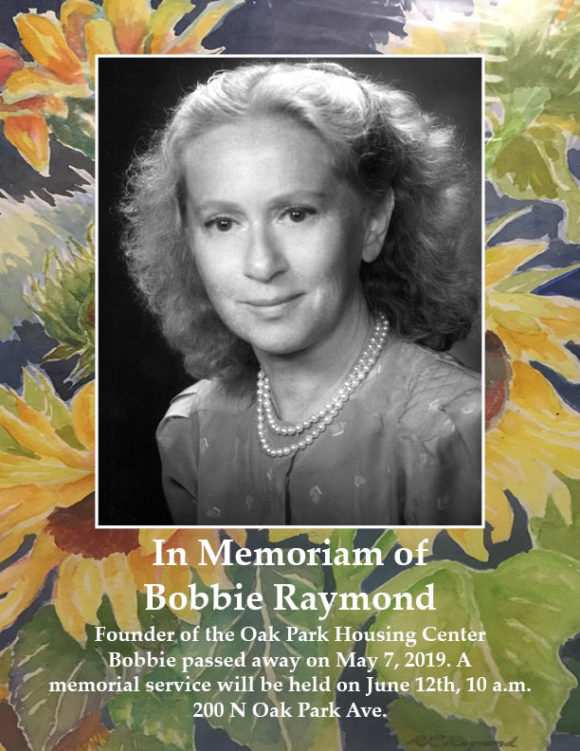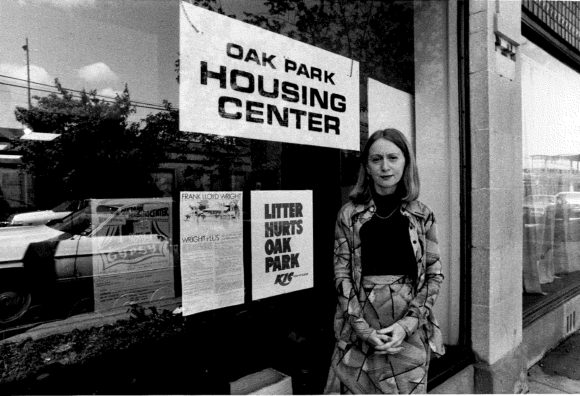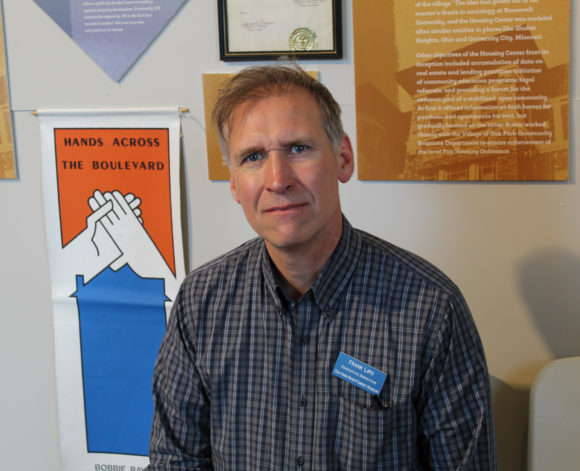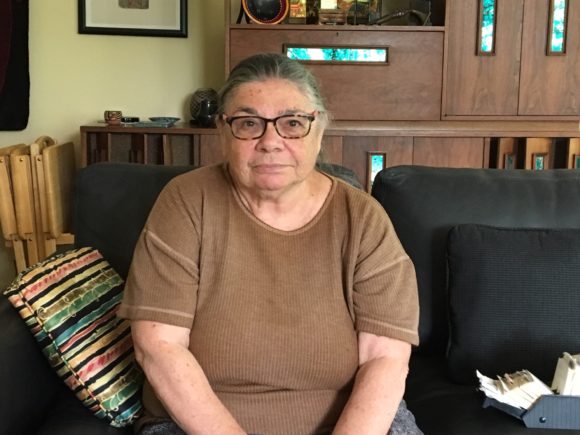Bobbie Raymond – A Whirlwind for Social Change
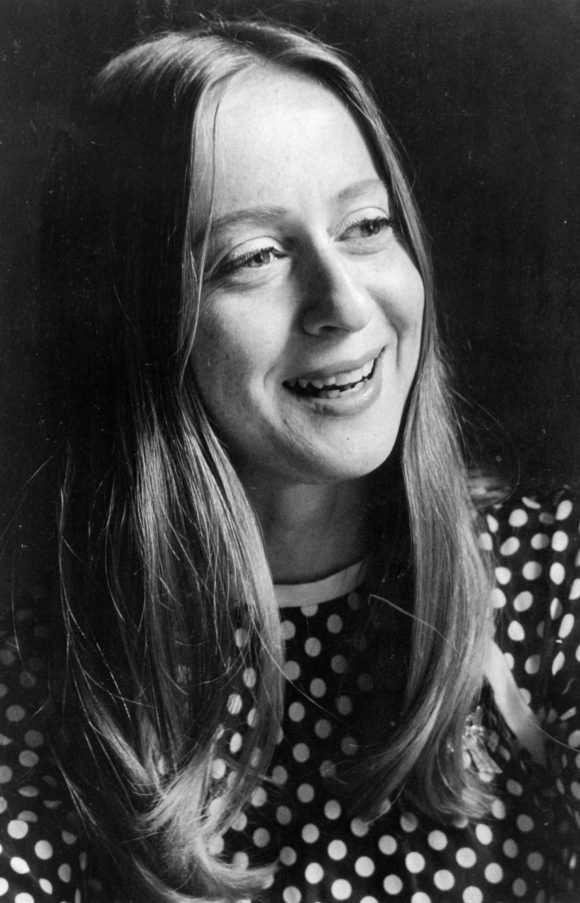 By Derrick C. Lewis
By Derrick C. Lewis
Much has been written about the former child actor, scholar, community activist, mother, artist, Roberta ‘Bobbie’ Raymond. Raymond has been described in the media and by those who knew her as a feisty and/or a fierce advocate for Oak Park. Small in stature but a dynamic advocate for social change, Raymond was a pioneer in the fight for fair housing and an advocate for maintaining integrated communities.
Before Raymond earned her acclaim as an innovative advocate for integration, she honed her promotional skills starting off as a child actor from 1945-52 in Chicago and then found work in New York acting in numerous radio, television, film, and stage productions. Television work included guest appearances on Jerry Lewis NBC Spectacular, An American Girl and on the soap operas Search for Tomorrow and Love of Life. She toured the Catskills with the Stanley Woolf Players in 1958 and earned the distinguished Actors Equity membership card. Raymond had a lead role in the 1960 pre-Broadway try-out of Tender Loving Care with John Payne. She also had a lead role in the pre-Broadway cast of Tender Loving Care in 1960. Raymond turned her attention from acting to copy advertising in the early ’60s and then began her undergraduate studies in sociology at Drake University, The New School for Social Research, and Hunter College.
Concerned about racial discrimination in housing and the steady resegregation of the Austin neighborhood on Oak Park’s eastern border, Raymond joined the Oak Park-River Forest Citizens Commission for Human Rights in 1966. Joined by progressive faith leaders, political radicals, those who viewed residential segregation as morally wrong, and those self-interested in keeping property values up, the commission’s mission was to lobby for a local fair housing ordinance and to pressure realtors to show houses to anyone qualified regardless of race. Arrayed against them was a majority of Oak Park residents and threats of violence, but employing the tactics of regular protest marches, demonstrations in front of realtors’ offices and “testing,” they were successful in obtaining a 5-2 vote by the village board in favor of a Fair Housing Ordinance in May 1968.
Frank Lipo, Executive Director at the Historical Society of Oak Park and River Forest, recognizing Bobbie as a key person in the fair housing movement, he indicated the leaders of the Oak Park fair housing movement did not rely on the force of their leader’s personality to affect change, but relied on their ability to marshall various groups of people working toward the same goal and implementing a plan. Raymond was able to work with a variety of groups and people to implement a vision of change. This was evident in making fair housing allies of Oak Park real estate brokers and agents, a group responsible for blockbusting tactics exacerbating white flight. Lipo attributed this to Raymond’s affinity for Oak Park. “Bobbie really loved Oak Park, as someone who grew up and went to high school here, there is an element that even though you are a change agent – she said we have to be welcoming to African Americans and others, but not throw away that we are a cultural community, we have good things.”
Galvanized in her fight for fair housing, she decided to pursue graduate studies in sociology at Roosevelt University in Chicago. Her thesis, “The Challenge to Oak Park: A Suburban Community Faces Racial Change” earned her a master’s degree with honors in 1972. With the Committee for Human Rights having accomplished its original goals of opening up the real estate market in Oak Park, they decided to disband, but not before Raymond offered a proposal for the next phase – the stabilization of the rental market. In the early 70s, the Austin neighborhood was undergoing rapid resegregation, the black population of Oak Park began to increase, and a number of whites had left Oak Park. Raymond’s thesis research was used as the basis for the Oak Park Plan or Strategy to establish a long-term racially integrated community, which led to her founding the Oak Park Housing Center (later the Oak Park Regional Housing Center) on May 1, 1972. Arguing that “a community attempting to maintain integration had a better chance than a community that resisted,” the volunteers at the Housing Center worked to attract continuing demand from whites while encouraging all clients to make “affirmative moves” that would increase integration and diversity in Oak Park. In 1976 the Housing Center moved from its office space at the First Congregational Church on Lake Street to its present location at 1041 South Boulevard. As current interim Executive Director Jay Readey said, “Bobbie Raymond made it so that the mission of the Housing Center converged with the identity of Oak Park; renowned for her work in the arts community and as a passionate member of the Oak Park-River Forest High School Alumni community, Bobbie showed how being passionate about both a place and its people can create a civic spirit that will live with her memory in Oak Park forever.”
Housing Guide Art Murnan
“Bobbie was one of the few people who was able to maintain the relationship of a boss and a friend at the same time. If the truth ever comes out, she was responsible for the history of Oak Park in the last 50 years of the 20th century. No one shaped Oak Park more than she did.”
Raymond served 27 years as Executive Director, and she hoped to change the way people thought about integration, “If you were not looking to live in a diverse community maybe Oak Park wasn’t for you,” was a saying she was known for. “She grabbed the Housing Center like a tool to move a community forward,” stated Lipo. With the help of the Housing Center, Oak Park was successful in establishing an integrated and diverse community where the black population from the 2010 census was 19.9% and the white population 68.6%. The black population of Oak Park was less than 1% in 1970. Within the village, as late as 2000 there were no resegregated census tracts, with tracts ranging from 7% black to 36% black. In neighboring suburbs, segregation trends are still operating. In addition to welcoming minorities into the community, Raymond also actively marketed Oak Park to the LGBTQ community.
Wednesday Journal Editor Dan Haley
“Bobbie Raymond was a radical thinker and doer. Oak Park does not exist as it does today without Bobbie Raymond. Period. At a time in the late 1960s and into the early 1970s when Oak Park was inventing a range of radical responses to ward off what was anticipated to be the likely resegregation of Oak Park — following immediately on the rapid resegregation of the West Side — Bobbie Raymond invented something in the Housing Center that I don’t think anyone else even understood the need for. That was her genius and her vision in that moment. Oak Park would not have found a path to racial integration without the Housing Center.In our misty-eyed lookbacks at those early days of integration efforts we have fairly consciously overlooked that success was anything but inevitable. We forget just how tense, fearful, racist Oak Park was in that moment. We don’t pay attention to the number of white people who packed up and moved to Westchester, Glen Ellyn and points west. I believe the current Open Housing exhibit at the history museum in Oak Park puts that percentage at 25 percent exodus. Those would be the adverse conditions.”
The success of the Housing Center was recognized nationally and internationally:
- 1973 named one of the top housing programs in the United States by the Department of Housing and Urban Development
- 1974 documentary film As Time Goes By: Oak Park, Illinois premiered at the Lake Theater in Oak Park and on television on WTTW. The film was reviewed in Chicago papers and in Variety
- 1976, the accomplishments of the Housing Center, along with the Oak Park Village Mall and the Frank Lloyd Wright Home and Studio, earned Oak Park the All-America City Award. Raymond wrote the winning presentation script. Wikipedia described the award as a turning point for Oak Park, bringing it extensive publicity and recognition from the National Municipal League and Chicago daily papers. An ABC documentary Oak Park: All American followed.
- 1978 the Housing Center and Raymond were featured on 60 Minutes.
- 1991 she was featured on the BBC radio documentary Race in America.
- 1993 she participated in a panel discussion of why people were leaving the city on Chicago Tonight
- 2008 she is featured in the book Save Our Land Save Our Towns, as well as in numerous newspaper and magazine articles over the years.
Program Director Michael Stewart quoted in the Chicago Tribune
“We talked about how it felt like she wasn’t just the boss, but was a part of the staff,” Stewart said. “If there was a gap where we needed someone at the front desk to work with a client or owner, she would do everything here. There was not a job below her. She was a firecracker and a firehouse. She was a small person, but she had a huge heart and huge plans for Oak Park. I have to note, she wasn’t the only one working on this. She worked in collaboration with many other community leaders. She knew it was important that it wasn’t just the housing center striving for integration.”
In 1996 Raymond stepped down as Executive Director of the Housing Center. Recognizing that Oak Park could not succeed if it remained an isolated oasis of integration, Raymond founded The Oak Park Exchange Congress in 1977 and served as its national vice president. The Exchange Congress was an organization of fair housing groups from Illinois, Ohio, Michigan, New Jersey, New York, and other states. Members met annually for nearly fifteen years to discuss integration; racial diversity in housing, schools, and religion; and economic development. Through the Oak Park Exchange Congress, the “Oak Park Strategy” became a model for integration nationally. Raymond also reached out to the Austin community by collaborating with the Austin Shock Historical Association to create the Austin Village House Tour, promoting historic homes in the neighborhood. She also established the 10K Boulevard Run, which ran through Oak Park and Austin, an annual event that lasted 10 years.
Community Activist Sandra Sokol
“We moved here in 1972 when the Housing Center first opened. I volunteered at the Housing Center, PTA and the Community Relations Department. Bobbie was amazing, in those days she rode a bicycle and she was everywhere and worked very hard to help people find housing. Our paths crossed a lot in regards to the condition of housing in our neighborhood, landlords, tenants and real estate agents. Bobbie was everywhere focused on Oak Park remaining an open community with fair housing and diversity. We personally believed in fair housing. At the early stages of the Housing Center there was help going on for not only for rentals but also for renting houses, and there were lots of different groups doing different things, but Bobbie was always there caring about Oak Park, and there is no one who cared about this community more than she did, and the energy and her intelligence, and mostly it was all volunteers. The Community Relations Department worked closely with the Housing Center on a daily basis. She always had good ideas. She did all the marketing and Oak Park was put on the map with the Housing Center. She helped to form the Oak Park Exchange Congress to show all the good things that Oak Park did with housing, education, business, and public safety. We had a big Exchange Congress in Oak Park and invited similar communities throughout the country to work together to emulate what Oak Park had done for fair housing. We would hold panel discussions, sharing what worked and didn’t work for fair housing. You have to work at it and you can’t stop. I’ve never met anybody who was so smart and caring, and did so many things for people with no accolades. She was not doing it for Bobbie. She was tough, no question about it, and passionate.”
Commenting on the longevity of Raymond’s legacy, Hayden stated, “Only important and worthwhile if it becomes the racial equity legacy. Integration was just the first step. Unless we get to a place of genuine power sharing, an acknowledgment that even Oak Park has an enormous equity burden to battle then integration has not accomplished what needs to be done. And, I’m not sure that Bobbie and some others of that remarkable generation fully understood the need for a continued radical focus on fostering the full flowering of what she bravely created all those decades ago.”
Roberta Lee Wolin was born on Nov. 16, 1938, in Oak Park to William and Rosemary (Lubin) Wolin. Her father was a teacher and Air Force consultant. She grew up in Oak Park and Chicago. Raymond’s first two marriages, to Geoffrey Hall Raymond and Dr. Wallace W. Kirkland, ended in divorce. In addition to her son, from her first marriage, she is survived by her third husband, Richard G. Larson, and a grandson, who is a fifth-generation resident of Oak Park. She passed away on May 7, 2019. Memorial services will be held at the Arts Center, 200 N. Oak Park Ave, Oak Park, IL, 10:00 a.m. to 12:00 p.m.
Donate today

